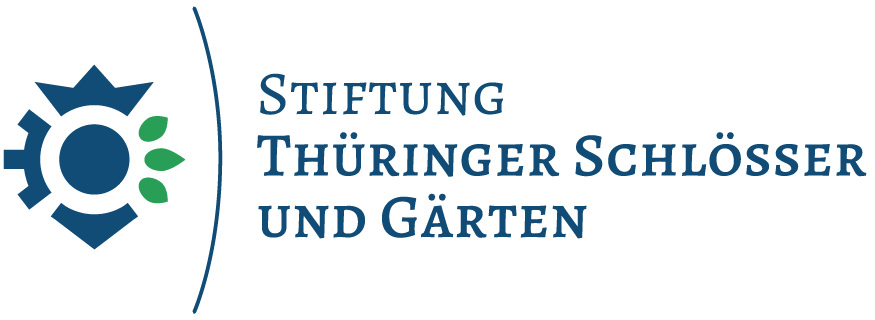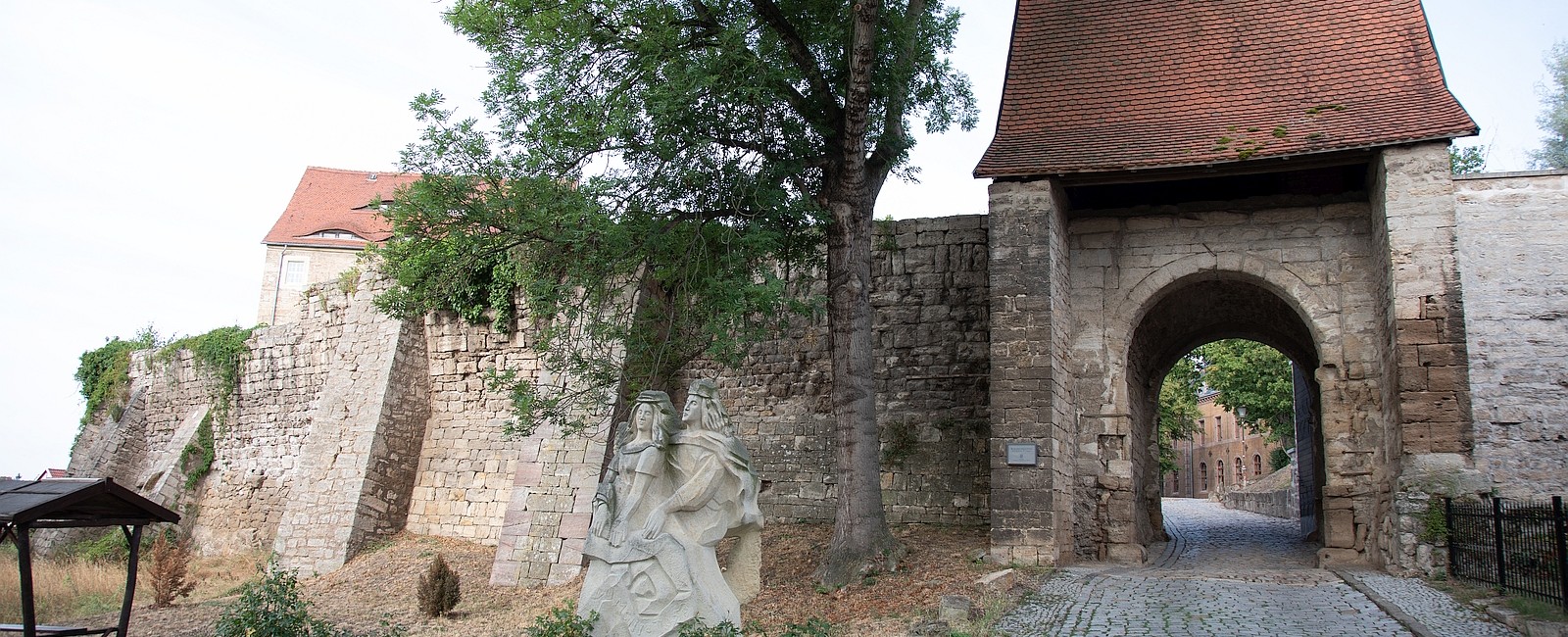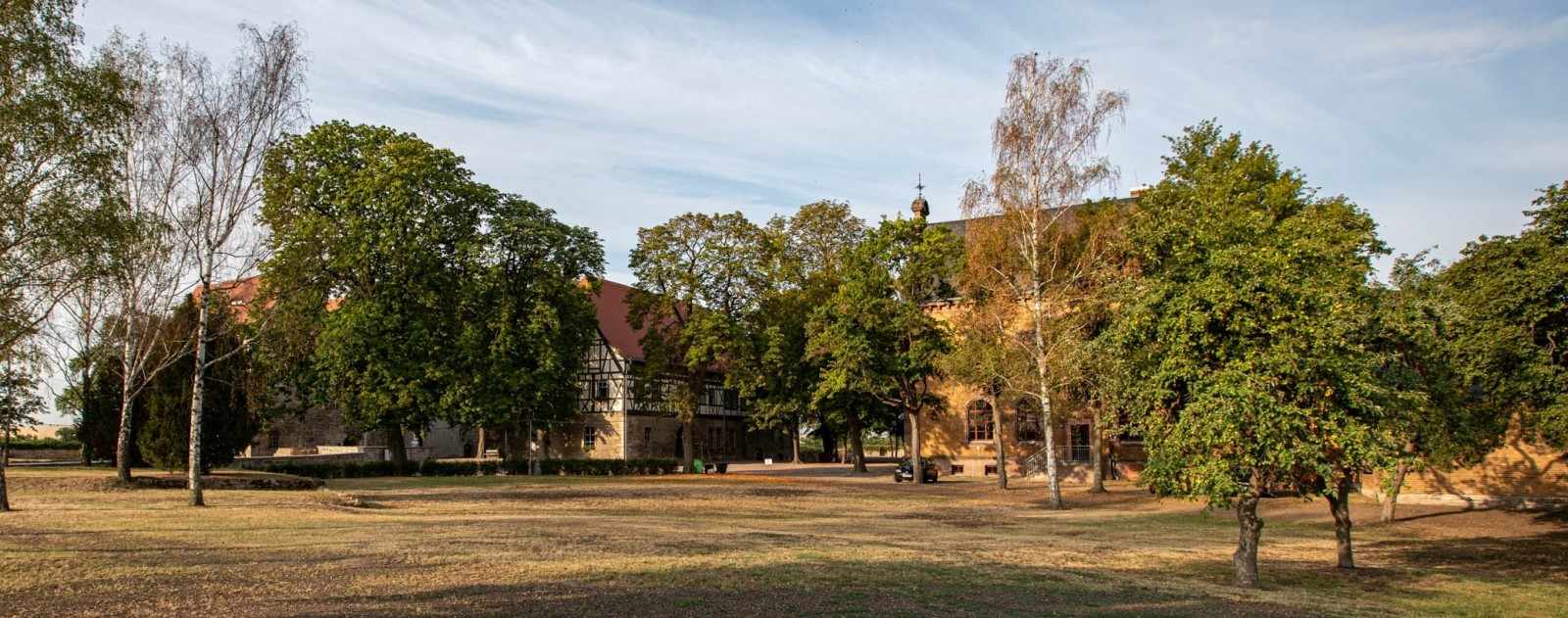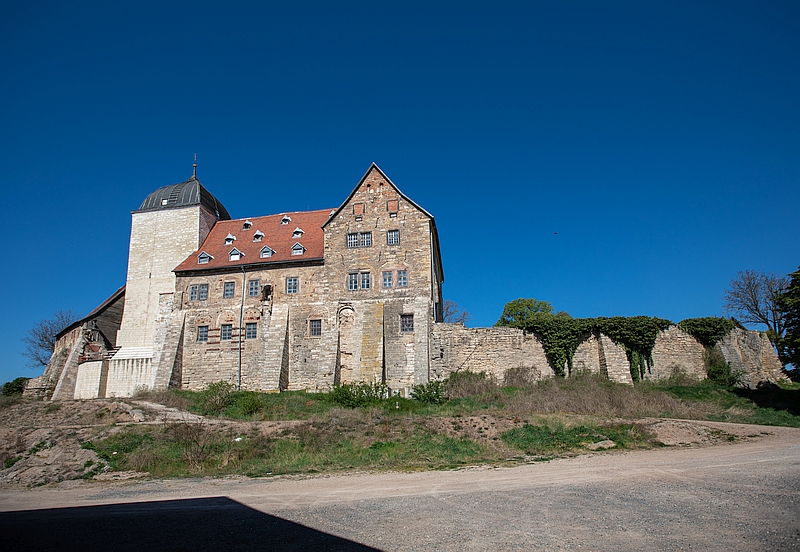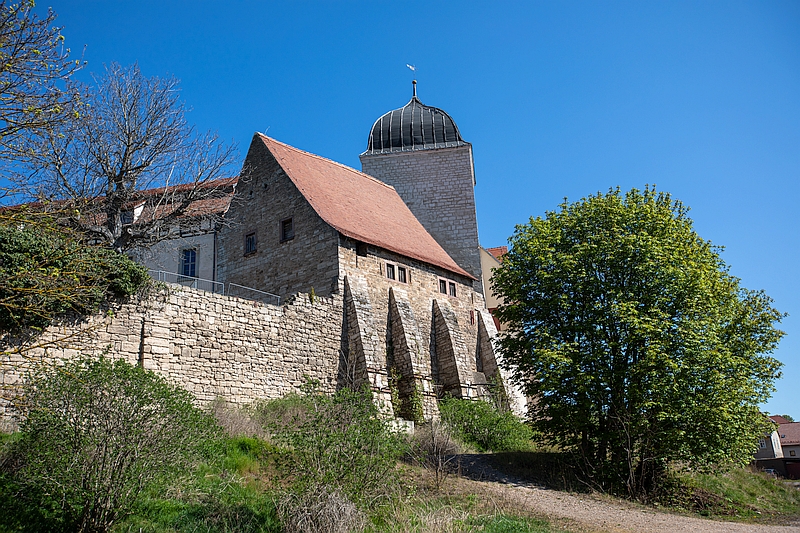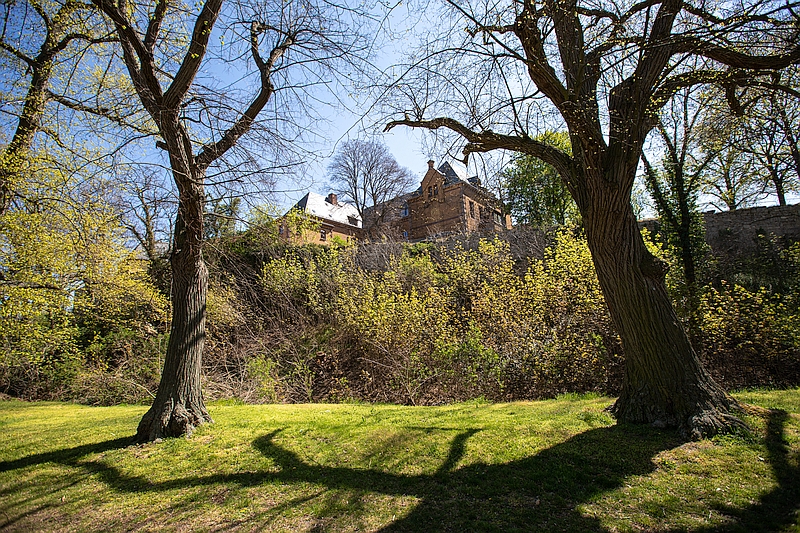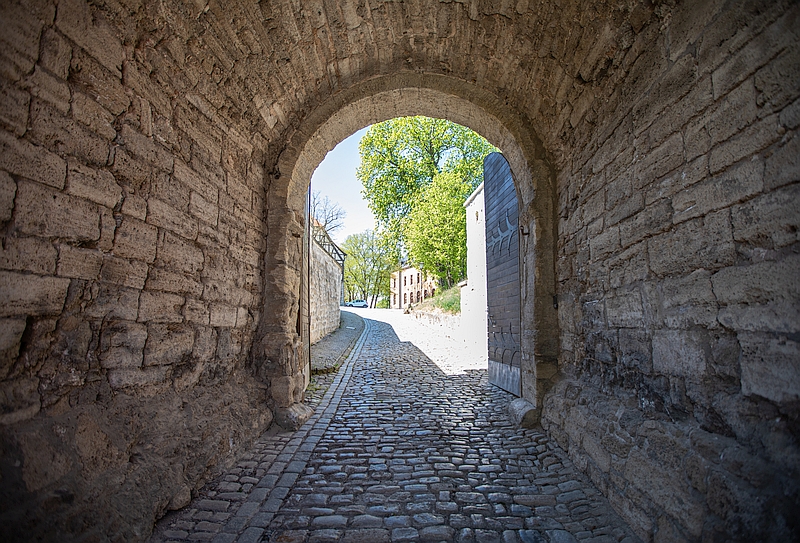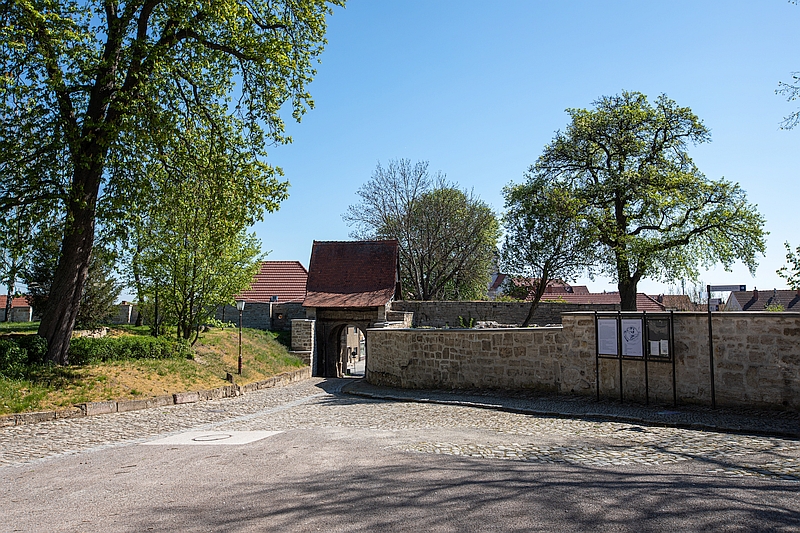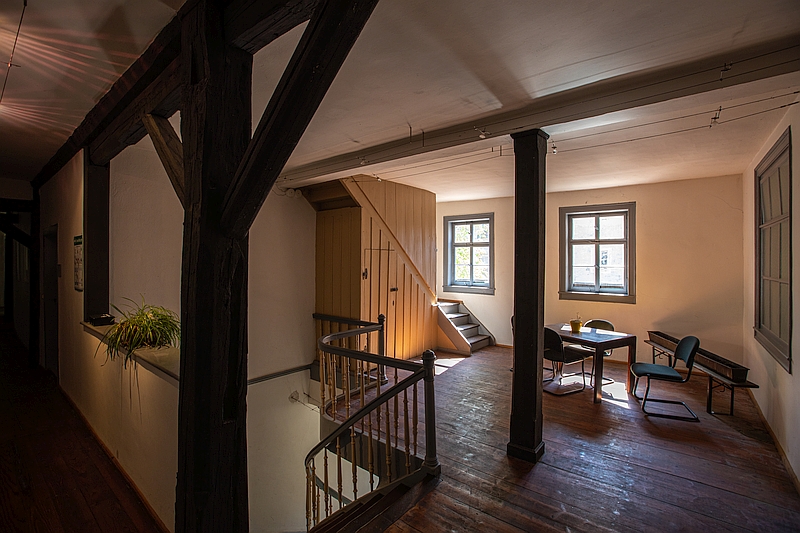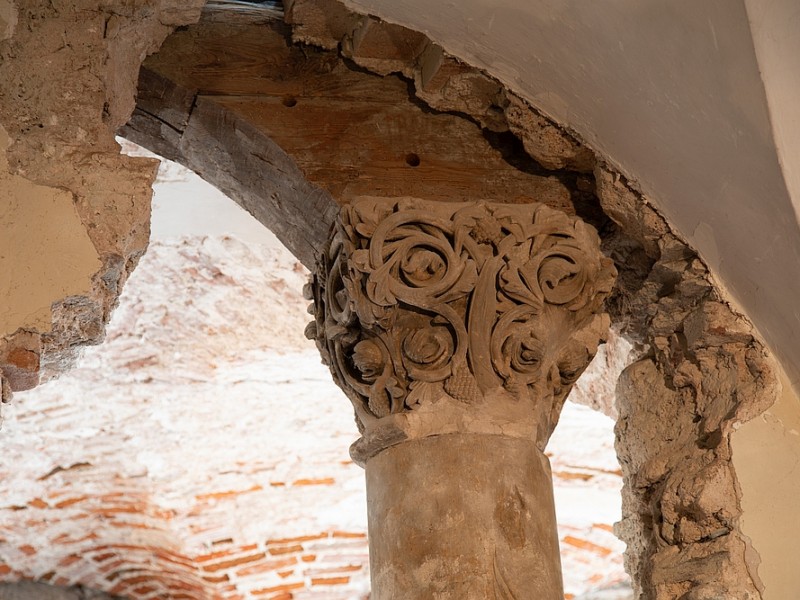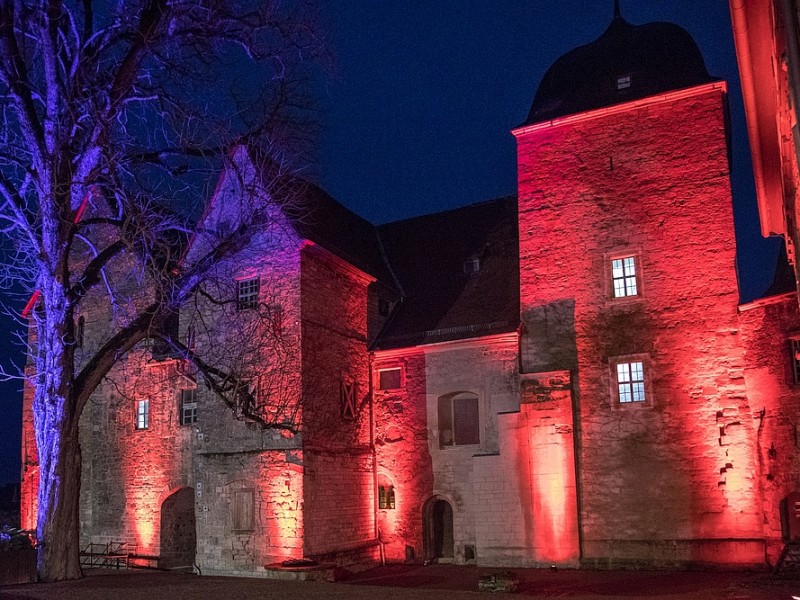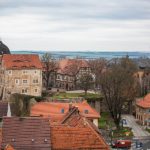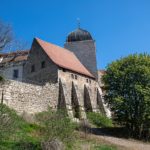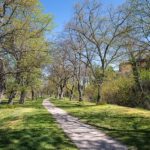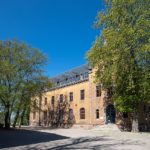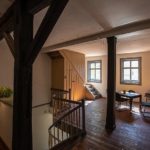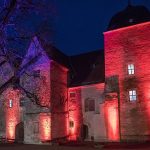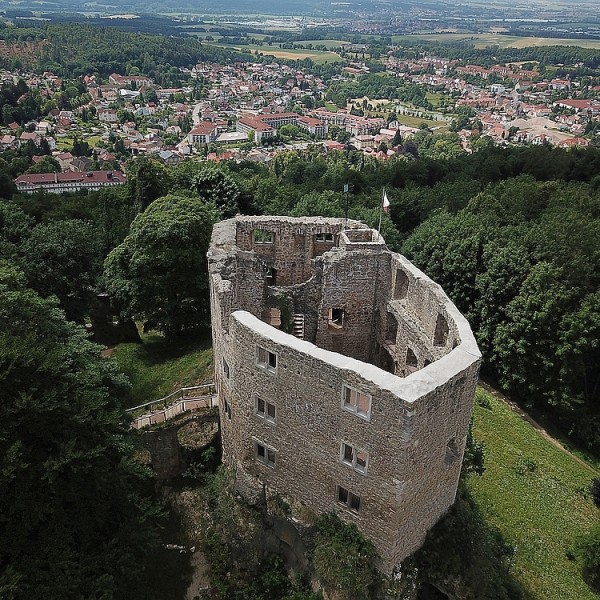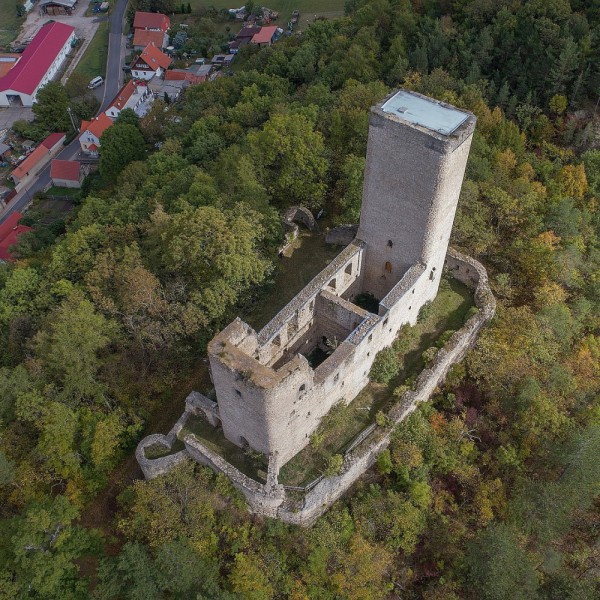Finder
Aktuell finden Burgführungen nur nach vorheriger Absprache mit der Schlossverwaltung statt. Wir bitten um Verständnis. Das Burggelände ist tagsüber für Besucher geöffnet.
Weissensee Castle/Runneburg
Residence of the landgraves of Thuringia
Residence of the landgraves of Thuringia dating from the High Middle Ages, Romanesque castle with keep, residential apartments, castle gate and enclosing wall
“Weissensee lies in the middle of Thuringia. From this town it is as far east to the Saale / as it is west to the Werra / also south to the Thuringian Forest / and north to the Harz mountains.” In the 12th century the Thuringian landgraves had already been aware of this strategic position described by the chronicler Olearius in 1704. For Weissensee, situated in a flat countryside of meadows and lakes, marks roughly the middle of the distance between the landgravian castles Wartburg and Neuenburg (today Sachsen-Anhalt). At that time the construction of a castle near the “white lake” seemed unavoidable. Even if legend has it that Landgravine Jutta wished the castle merely to be a kind of intermediate stop on her journeys, the castle erected around 1170 nonetheless conveys – in spite of all later alterations – the impression of a massive fortification. It is verified that before he could build this castle Landgrave Ludwig II had to occupy foreign territory first.
Different from the evaluation 100 years ago Weissensee Castle ranks today among the largest Romanesque castle complexes in Germany. Building archaeology, exposures inside the buildings as well as excavations on the castle grounds and outside have revealed that there this no other castle where as much Romanesque architecture has survived at the original site as at Runneburg Castle, the grounds of which cover 1.5 hectares surrounded by an elliptic enclosing wall. Through the castle gate from the 13th century and past buildings from a later period the path leads towards the most important architectural elements from the high Middle Ages at this site, the residential apartments and their tower.
After the Palace, Castle and Gardens Trust of Thuringia took over the Runneburg more than 6 million German marks and euros were spent on the repair of this badly neglected landgravian castle. By a spectacular building project, the tower could be restored and since 2016 stands without the huge steel corset that had protected it from collapsing for more than 20 years. Window and door jambs, capitals or the extremely rare “stone stove air-heating” in rooms included in the tours already give an impression of the quality to be regained in this building.
Ausstattungsmerkmale



Burg Weißensee
Aktuell finden Burgführungen nur nach vorheriger Absprache mit der Schlossverwaltung statt. Wir bitten um Verständnis. Das Burggelände ist tagsüber für Besucher geöffnet.
Weitere Einrichtungen
Das Burggelände ist frei zugänglich.
April-Okt Sa-So: stündliche Führungen 11:00-16:00 Uhr
weitere Führungen nach Vereinbarung mit der Schlossverwaltung
Erwachsene: 4,00 €
Kinder bis 12 Jahre frei
Gruppen: 2,- € (ab 10 Personen)
Parkplatz für 50 PKW- und
4 Busplätze 100 Meter entfernt
300 PKW- und 30 Busplätze 200 Meter entfernt
in der Stadt vorhanden
Landgasthof auf der Burg
Telefonnummer 036374/361803
